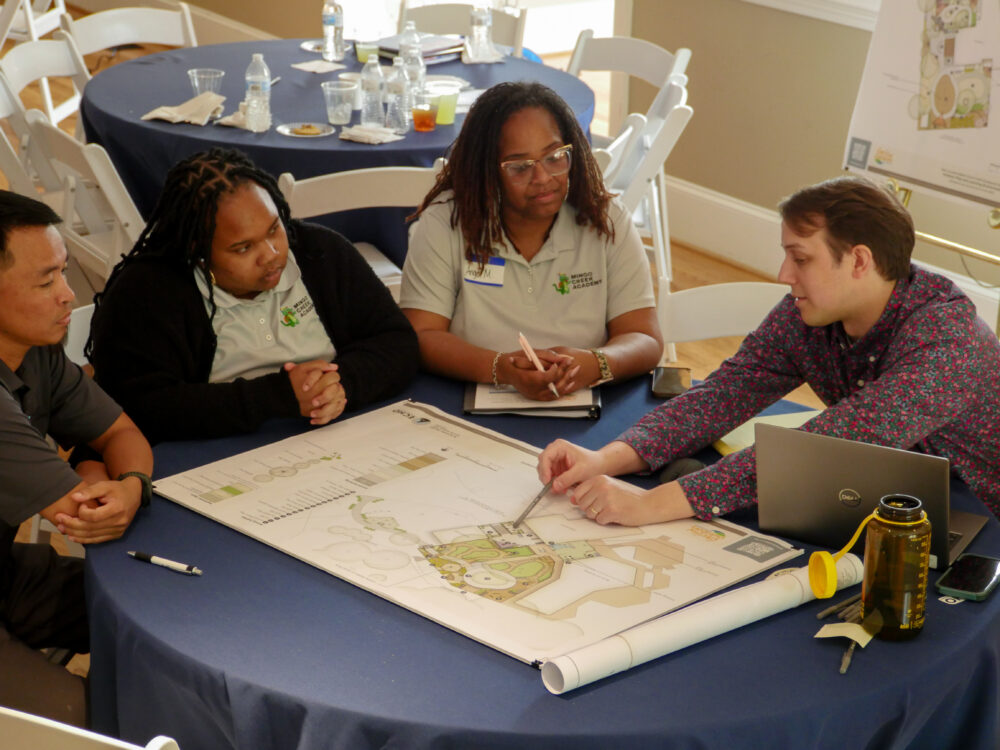We have much more to do and your continued support is needed now more than ever.
Digitizing the Outdoors: Can Gaming be the Gateway to Nature?

Research suggests that ADHD and other behavioral issues are lessened when children spend time in the outdoors. Most notably, Richard Louv, author of The Last Child in the Woods and architect of the term Nature Deficit Disorder has argued that “an environment-based education movement–at all levels of education–will help students realize that school isn’t supposed to be a polite form of incarceration, but a portal to the wider world.”
One complaint from children, however, is the outdoors are “boring,” which is a far cry from it being a “portal to the wider world.” As a kid I used the outdoors as a way to get away from the trappings of schoolwork and housework. Unlike kids today, I used the outdoors as my outlet–instead of using an electric outlet as my escape.
It’s possible however, that I am aging and just can’t understand what the “kids are into these days.” But if the rise in childhood obesity, ADHD, and other health issues are any indicators of the 21st century childhood realities—I’ll hold tight to my fort-building, Red Rover, hide-and-go-seek 20th century kid fun!
Is it possible though that kids today don’t have to choose between the delight of a swinging screen door to the outdoors and the allure of the digital screen? Can we find a way to meld these two dichotomous worlds? Recently, the Obama Administration followed the lead of the Bipartisan Policy Center and held an event on how we can combine 20th century outdoor ideals with the new 21st century electronic leisure time.
Earlier this month the White House’s Office of Science and Technology Policy held a briefing entitled Outdoor Mobile Games and Public Lands. The room was filled with an usual set: gaming experts and environmentalists. Generally, these two groups have been at odds (or at least haven’t worked closely together very often), with many environmentalists blaming the gaming industry for the uptick in the sedentary indoor child trend. But if we are to really understand the 21st century childhood–game designers are the experts to court.
Both groups discussed the need for collaboration. “Games could help turn a regular park into a storybook” said one game aficionado. It can’t be negated that the popularity of the Olympic National Forest went through the roof once the movie Twilight was released–that’s the power of media, and arguably the power of games. Several agencies across the US government currently fund game development and research programs, but there has been little coordinated effort to target games that get kids to public lands. Seventy-one percent of tweens (kids ages 12-14) play games on a mobile device and that number is only growing.
Digitizing the outdoors is a new trend that’s gaining traction even at the nation’s largest conservation organization. The National Wildlife Federation has entered into the electronic market with several offerings for virtual exploration into nature using the iPad as well as their geo-caching “nature treasure hunt,” a Nature Find website and digitizing their famous Ranger Rick magazine among other electronic advancements.
If we could entice these tech savvy kids with the natural world through games, not only could we begin to reverse the sedentary indoor childhood trend, but build conservation stewards of tomorrow—one click at a time.
Do you think digitizing the outdoors is a good thing? Tell us what you think below.





















